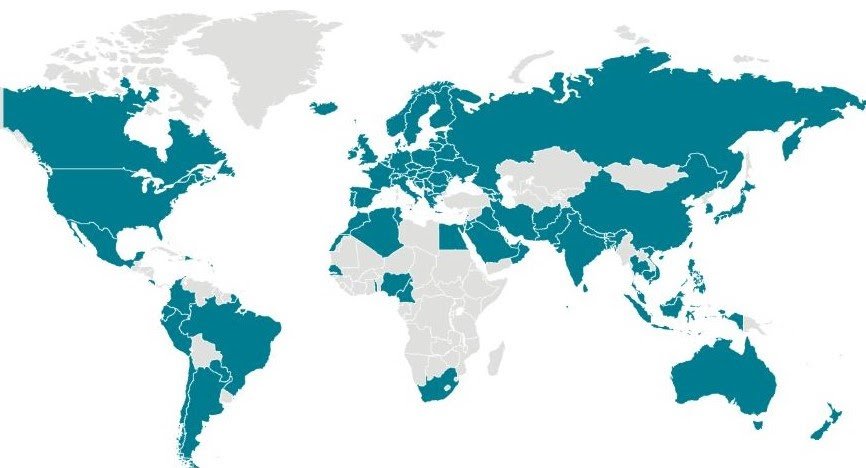 Richard S. Levick, Esq., Chairman & CEO, LEVICK
Richard S. Levick, Esq., Chairman & CEO, LEVICK
We will survive the novel Coronavirus. But it is going to challenge us.Leadership during up markets is relatively easy. “Buy low, sell high and follow me.” It is during crises where leadership mettle is tested.
The late winter and early spring of 2020 – the season of the Coronavirus and subsequent market freefall – has already earned its place as an historic global crisis which is going to test our individual leadership. It shocks the conscience to write this, but it is a test, tragically, the federal government has already largely failed. Confidence in the ability of this federal government to lead us out of this downward spiral of physical and fiscal fears has at best waned. Here is praying they find this as an opportunity not to blame others but calm fears.
How do we, as business leaders, show courage to our employees and customers during a leadership vacuum? 1. Recognize reality. The situation is going to get worse before it gets better. Today’s revelation that the head of the New York Port Authority has tested positive for COVID-19 is not good. It means that many people and many things could potentially be infected throughout the east coast. It’s a microcosm of what we’re going to be experiencing over the next few weeks and perhaps months.2. This is a pandemic, not the plague.Fortunately, this virus isnotthe plague. It is not likely to kill us. This is a disruption whose greatest significance should last weeks, not years. Plan accordingly. What are the short term sacrifices we need to make to get through this at the lowest long term cost? 3. Show courage. Your employees, your stakeholders, your supply chain people, et al., are all counting on you to be forthright. Err on the side of caution. Your brand will survive this rough patch by staying calm and being transparent. It won’t if you panic and go opaque.4. Remember your Jack Welch – “in a crisis overcommunicate.” Don’t assume people “get it” the first time. Repeat it and repeat it some more. And drive people to your website to repeat it again.5. Recognize the “unknown unknown.”No one knows how long this crisis will last, or how lethal it will be. Don’t pretend you do. It’s likely that the virus will be with us for a while. That doesn’t mean the world will stay in crisis mode forever. Send your people to WHO, Johns Hopkins CSSE, and other expert websites – don’t be caught making predictions yourself.6. Working remotely is a viable solution. Have everything in motionnowfor your employees to work from home (WFH) at a moment’s notice. That important document on your desk? Right now is the time to scan it or take it home. The chances we will be WFH increase daily and are likely to be put in place within a week.7. Empathize with your employees. They’ve got kids and elderly parents to worry about. If working remotely helps them deal with their everyday challenges, then, by all means, encourage it now before it becomes policy.8. Testing is limited. If an employee is sick or feels unwell, they need to stay home. It is not at their discretion. The chances of them being tested for Coronavirus are limited so make sure this is policy, not option. 9. Look at best practices.Check out this link to find out how other businesses are dealing with it.Finally: Step up in the absence of political leadership. In past crises, we always followed the federal government. Think FDR after Pearl Harbor, George W. Bush after 9/11 and Barack Obama after the Wall Street crisis. Today, with the White House still denying there is a growing crisis, we unfortunately don’t have a national leader setting policy to shine a beacon and calm nerves. We can’t “follow the federal government” as my business and thousands of others do on everything from snow days to other disruptions. Our best advice on WFH, virtual meetings and closings? Follow your local school board.
 About the Author: Richard Levick, Esq., @richardlevick, is Chairman and CEO of LEVICK. He is a frequent television, radio, online, and print commentator.
About the Author: Richard Levick, Esq., @richardlevick, is Chairman and CEO of LEVICK. He is a frequent television, radio, online, and print commentator.
 Richard S. Levick, Esq., Chairman & CEO, LEVICK
Richard S. Levick, Esq., Chairman & CEO, LEVICK
 About the Author: Richard Levick, Esq., @richardlevick, is Chairman and CEO of LEVICK. He is a frequent television, radio, online, and print commentator.
About the Author: Richard Levick, Esq., @richardlevick, is Chairman and CEO of LEVICK. He is a frequent television, radio, online, and print commentator.
